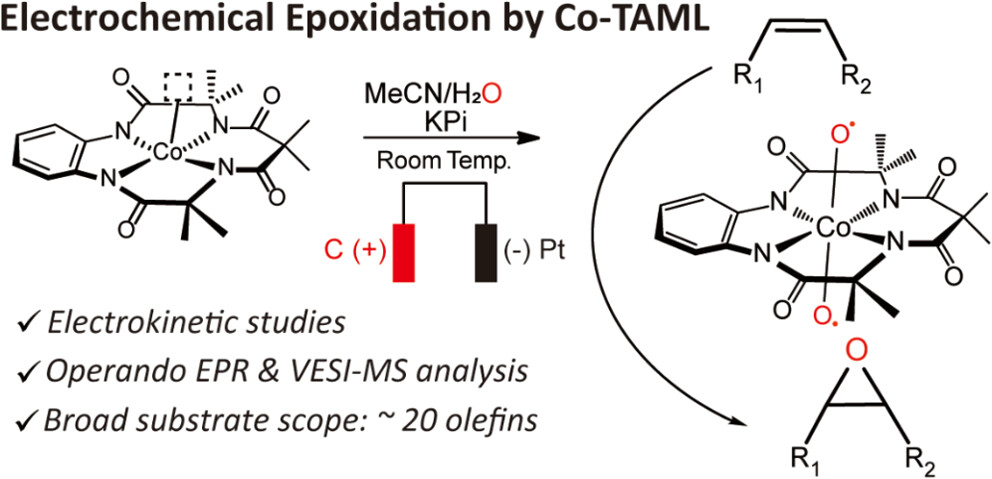Epoxides are versatile chemical intermediates that are used in the manufacture of diversified industrial products. For decades, thermochemical conversion has long been employed as the primary synthetic route. However, it has several drawbacks, such as harsh and explosive operating conditions, as well as a significant greenhouse gas emissions problem. In this study, we propose an alternative electrocatalytic epoxidation reaction, using [CoIII(TAML)]– (TAML = tetraamido macrocyclic ligand) as a molecular catalyst. Under ambient conditions, the catalyst selectively epoxidized olefin substrates using water as the oxygen atom source, affording an efficient catalytic epoxidation of olefins with a broad substrate scope. Notably, [CoIII(TAML)]– achieved > 60% Faradaic efficiency (FE) with > 90% selectivity for cyclohexene epoxidation, which other heterogeneous electrocatalysts have never attained. Electrokinetic studies shed further light on the detailed mechanism of olefin epoxidation, which involved a rate-limiting proton-coupled electron transfer process, forming reactive cobalt oxygen active species embedded in 2e-oxidized TAML. Operando VESI-MS and EPR analyses were utilized to identify a cobalt oxygen active intermediate during an electrocatalytic epoxidation by [CoIII(TAML)]–. Our findings offer a new possibility for sustainable chemical feedstock production using electrochemical methods.

 Mechanisms of chemotherapy failure in refractory/relapsed acu...
Mechanisms of chemotherapy failure in refractory/relapsed acu...
 Atomic-level Ru-Ir mixing in rutile-type (RuIr)O2 for efficie...
Atomic-level Ru-Ir mixing in rutile-type (RuIr)O2 for efficie...

















